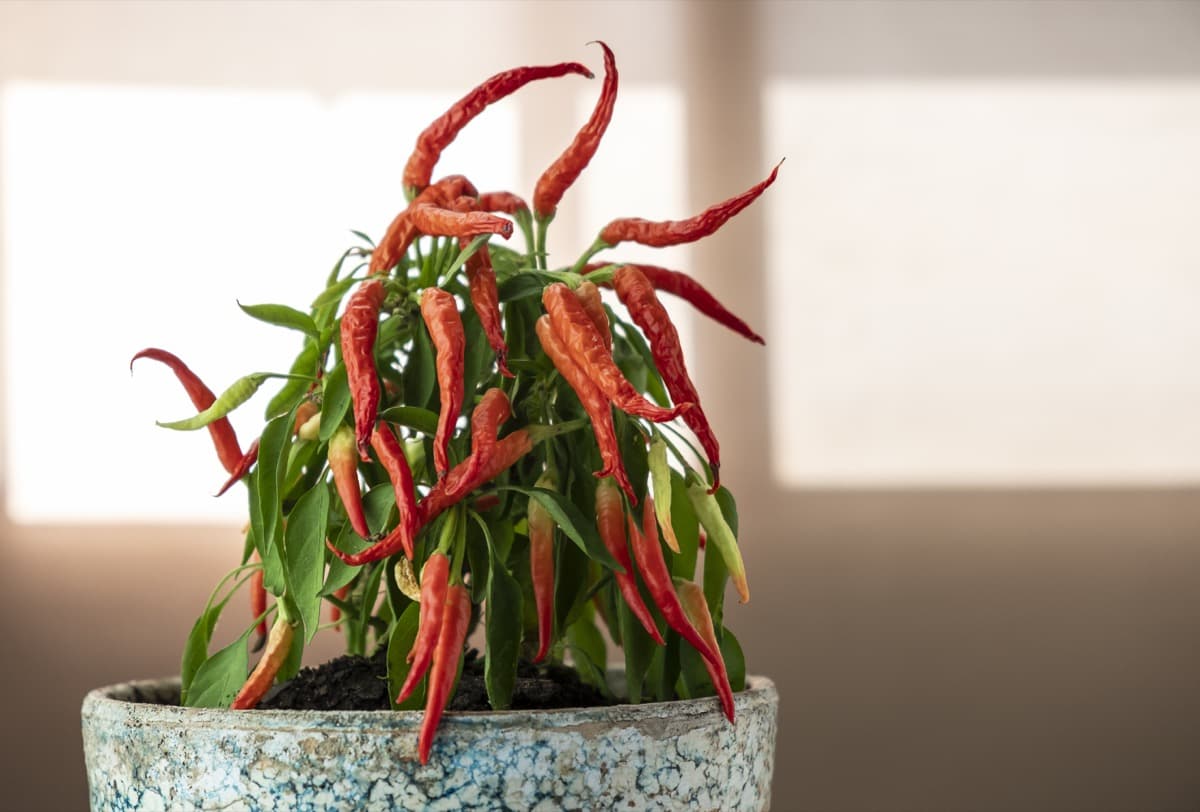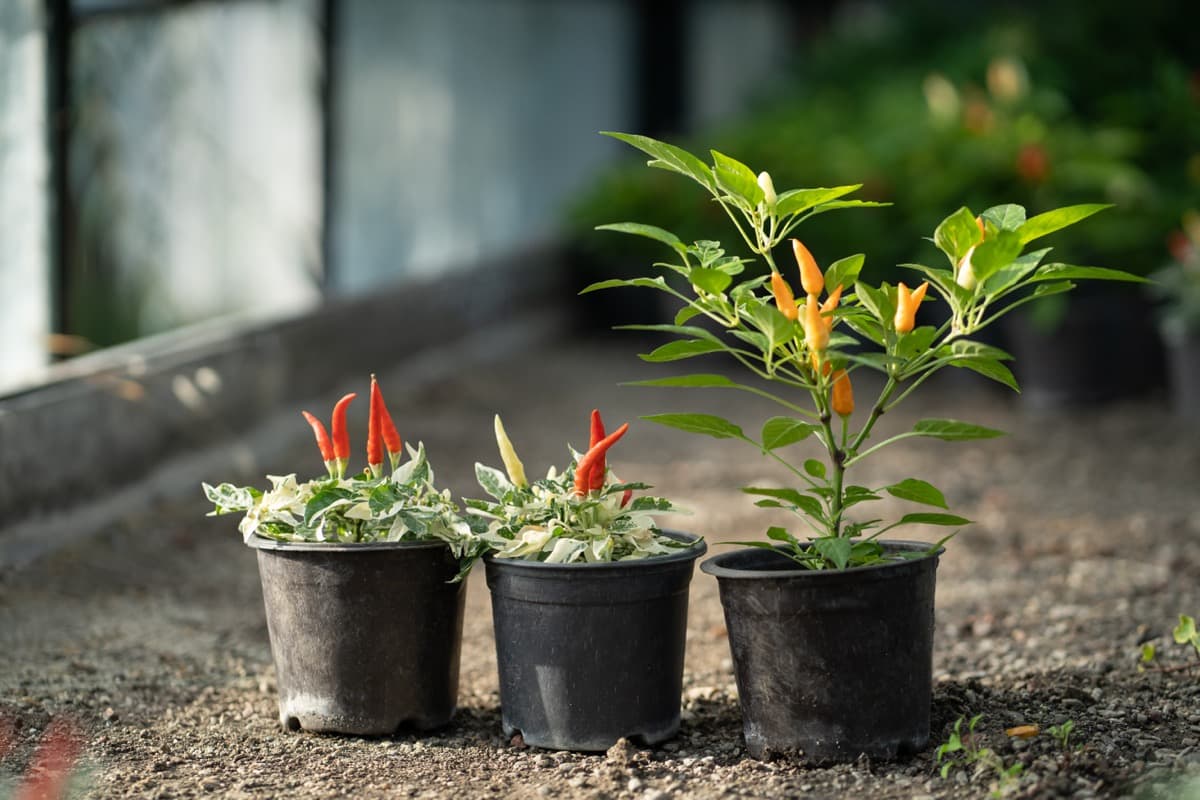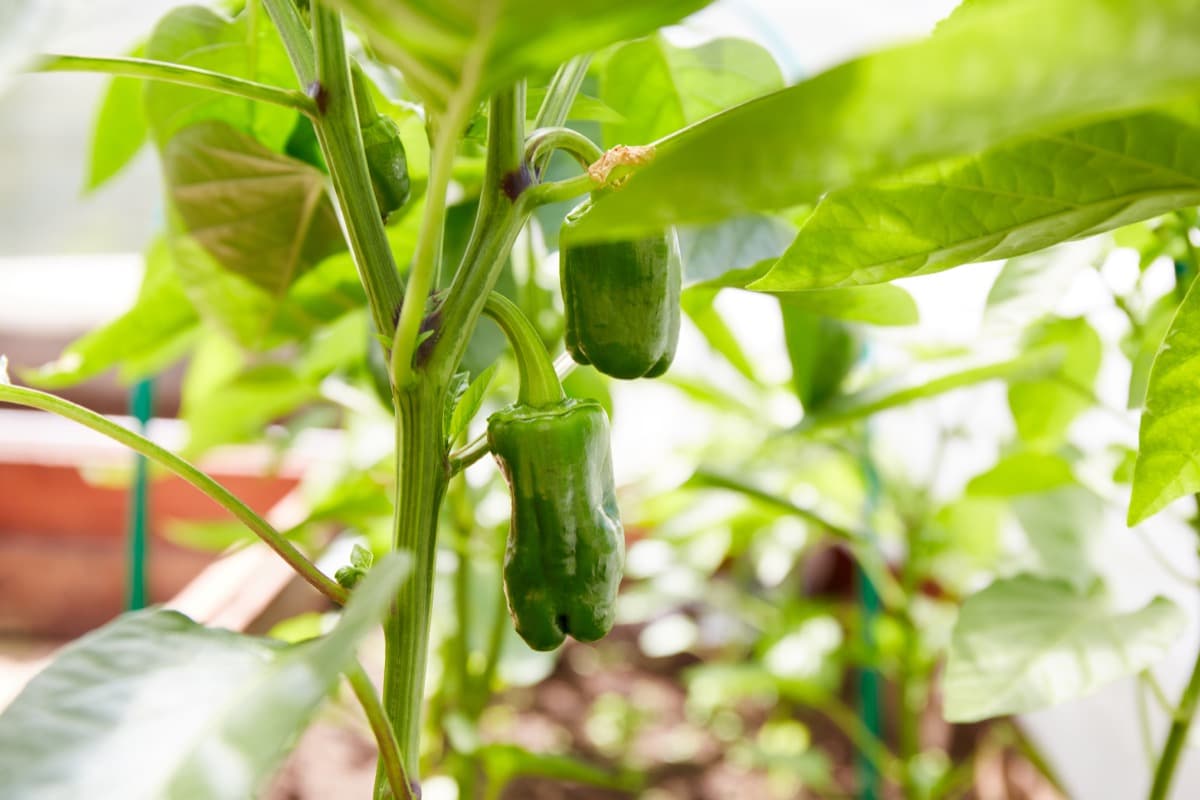Growing bell peppers in pots indoors can be an extremely rewarding endeavor, particularly for those with limited outdoor space. The joy of witnessing the transformation from tiny seeds to bountiful plants is unparalleled, and the reward is a feast for the eyes and the palate. Peppers, especially bell peppers, are packed with vitamins and nutrients, adding flavor and health benefits to your meals.

But how can a novice gardener grow and care for pot pepper plants? This article will provide a detailed guide, covering everything from selecting the best peppers to grow in containers to the watering schedule for potted pepper plants, pruning techniques, common pests, and much more.
How to Grow and Care for Pepper Plants in Pots/Containers
Best Soil Mix for Pepper Plants in Pots
The first and most vital step in growing pot peppers is choosing the right soil mix. Peppers thrive in well-drained, fertile soil with a neutral pH. They require a mix that retains moisture without waterlogging their roots. A good quality, all-purpose potting soil mixed with some compost or well-rotted manure can be an excellent choice. You can also mix in perlite or vermiculite to improve aeration and drainage. Remember that soil plays a critical role in providing your plants with necessary nutrients and also serves as the anchor for the roots.
Container Size for Growing Peppers in Pots
The container size for bell peppers is another crucial aspect to consider. Opt for pots at least 12-16 inches deep and wide to ensure that your plants have adequate room for growth. Peppers have a relatively robust root system; the more space they have to grow, the healthier your plants will be. Remember that the container’s size may also depend on the type of pepper plant. Some dwarf varieties can do well, even in smaller pots. But as a general rule, larger containers lead to larger plants and a more abundant harvest.
Watering Schedule for Potted Pepper Plants
When it comes to watering, a balanced approach is key. Excess watering causes root rot, while insufficient watering stresses plants, impacting their growth and productivity. It’s best to keep the soil moderately moist but not waterlogged. In hot weather, water your plants deeply when the top inch of soil is dry. In cooler weather, you can water less often. Proper watering is even more critical when growing peppers in pots in a greenhouse, as conditions inside can be much drier.
Sunlight Requirements for Peppers in Containers
Peppers are sun-loving plants. Whether you’re growing peppers in pots in a greenhouse or indoors, make sure they get plenty of sunlight – at least 6-8 hours a day. South or west-facing windows are the best spots for indoor plants. Make sure the pots are placed in a greenhouse where they’ll receive enough light. If natural light is insufficient, consider using grow lights. Remember, the more sunlight your pepper plants receive, the more prolific they’ll be.
In case you missed it: 10 Common Problems With Garden-Grown Peppers: Treatment and Solutions

Pruning Techniques for Potted Pepper Plants
Pruning is not just for aesthetic purposes but also aids in promoting healthier and more productive plants. It involves removing certain plant parts, like dead or diseased branches, to redirect energy toward growth and fruit production. For pepper plants, pruning can help maintain a compact size, making them ideal for container growing. Start by removing the lower branches, which are more susceptible to disease. As the plant grows, you may also want to pinch off some of the flowers to encourage the plant to put more energy into fewer but larger fruits.
Common Pests and Diseases of Container-grown Pepper Plants
Even with the best care, pepper plants can sometimes be afflicted by pests and diseases. Aphids, spider mites, and whiteflies are plant-damaging pests. They suck sap from the plants, causing them to wilt and become discolored. To manage these pests, regularly check the undersides of leaves and use insecticidal soap or neem oil if necessary.
Diseases like bacterial leaf spot and fungal infections can also affect pepper plants. Overwatering and poor air circulation often contribute to these problems, so proper watering and spacing of the plants can go a long way in disease prevention.
Harvesting Peppers From Potted Plants
Harvesting is perhaps the most exciting part of the whole process. Most bell peppers can be harvested when green, but if you leave them on the plant longer, they will change color and become sweeter. Remember, regular harvesting encourages the plant to produce more fruit. So, even if you don’t plan on using the peppers immediately, it’s best to pick them up and store them in the refrigerator.
Overwintering Pepper Plants in Pots
One advantage of growing peppers in containers is that you can extend their life beyond a single growing season. Overwintering involves bringing your pepper plants indoors to protect them from cold winter temperatures. Before bringing them inside, prune them back by about a third and check carefully for pests. Please place them in a sunny location and water sparingly throughout the winter. With a little luck and care, they’ll return to life with warmer weather.
Pepper Seed Germinations and Planting
Growing bell peppers in pots from seed is not as difficult as you might think. Begin by soaking the seeds overnight to speed up germination. Plant them at a depth of 1/4 inch in a seed-starting mixture. Keep the soil moist and warm, ideally between 70-85 degrees Fahrenheit. Seedlings should emerge in about 2-3 weeks.
Once they’re about 3 inches tall and have developed a couple of true leaves, they can be transplanted into pots. Remember to harden off the seedlings Whether in a greenhouse or indoors. This process involves gradually exposing them to outdoor conditions to toughen them up and reduce transplant shock.
Fertilizing Pepper Plants in Pots
Just like humans, plants, too, require a balanced diet to grow and thrive. Fertilizers play a vital role in supplying necessary nutrients to your pepper plants. Peppers are heavy feeders, meaning they benefit from regular feedings of a balanced, slow-release fertilizer. Ensure the fertilizer includes a mix of nitrogen, phosphorous, and potassium, essential for plant growth, flowering, and fruit production. To get the best out of your plants, start feeding them when you notice the first fruits beginning to form and continue throughout the growing season, following the package instructions.
In case you missed it: How to Control Fungal Diseases of Chili Pepper and Effective Management Strategies

Conclusion
Whether peppers grow better in pots or ground has a variety of answers. It depends on available space, climate, and the gardener’s preference. But with the right care and attention, growing peppers in pots can be a delightful and fruitful endeavor. Enjoy the process, learn from any mistakes, and before you know it, you’ll have a vibrant pepper harvest to spice up your culinary adventures.
- Feed Your Flock for Less: Top 10 Tips to Save on Chicken Feed
- Ultimate Guide to Ossabaw Island Hog: Breeding, Raising, Diet, and Care
- Hatching Answers: The Top 10 Reasons Your Chickens Aren’t Laying Eggs
- Eggs and Economics: Breaking Down the Cost of Raising Backyard Chickens
- Defend Your Greens: Proven Methods to Keep Iguanas Out of Your Garden
- Ultimate Guide to Cinnamon Queen Chicken: A Comprehensive Guide for Beginners
- Ultimate Guide to California Tan Chicken: Breeding, Raising, Diet, Egg-Production and Care
- Ultimate Guide to Marsh Daisy Chicken: Breeding, Raising, Diet, and Care
- 10 Types of Chicken Farming Businesses You Can Start for Profits